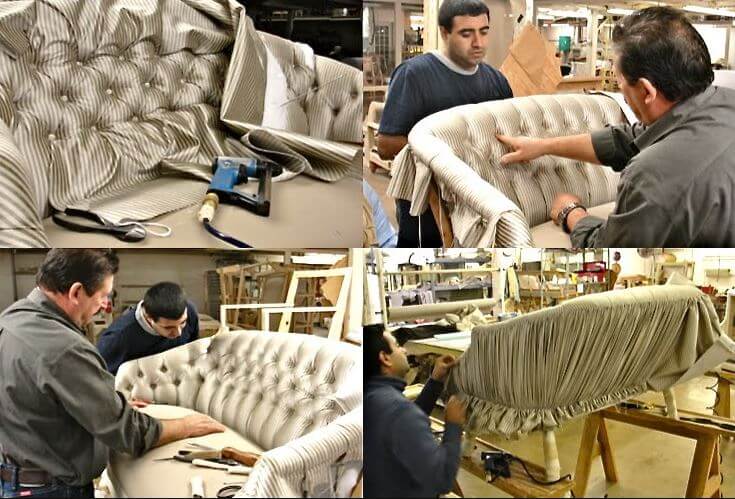- Remove the existing fabric and padding: Use a screwdriver to remove the existing staples and screws and set them aside. Use a utility knife to remove any existing fabric and padding.
- Prepare the frame: Check the structural integrity of the frame and make any necessary repairs. Clean the frame with a damp cloth and let it dry.
- Cut the foam and fabric: Use the measurements taken from the chair to cut the new foam and fabric. Make sure to leave a few extra inches for folding, tucking, and stapling.
- Attach the foam to the frame: Secure the foam to the frame using glue or staples. Make sure to firmly press the foam into place so that it adheres to the frame.
- Attach the fabric to the frame: Begin by stapling the fabric to the frame around the edges. Make sure to firmly press the fabric into place so that it adheres to the frame.
- Finish the fabric: Fold and tuck the fabric around the edges to create a crisp and finished look. Secure the fabric with additional staples to ensure a secure fit.
- Reattach the screws and staples: Use the original screws and staples to reattach the chair to the frame.
How to Clean and Maintain Your Upholstered Chairs
- Vacuum the upholstery: Use an upholstery attachment to vacuum the chair. This will help remove any surface dirt and debris.
- Spot-clean spills and stains: Use a mild detergent and warm water to spot-clean any spills or stains. Make sure to use a gentle brush to scrub the dirt away.
- Clean the frame: Use a damp cloth to wipe down the frame of the chair. This will help remove any dust and dirt that has accumulated over time.
- Apply a protective coating: Apply a protective coating to the upholstery. This will help protect the fabric from dirt, dust, and stains.
- Condition the leather: If your chair has leather upholstery, you should use a leather conditioner to keep the leather soft and supple.
- Store the chair when not in use: When not in use, store the chair in a cool, dry place to avoid any damage or discoloration.
Common Mistakes to Avoid When Upholstering Chairs
- Not measuring the chair: Before you start upholstering, you should measure the chair so you know how much fabric and other supplies you need.
- Not using the right fabric: Make sure you use a fabric that is designed for upholstery and won’t easily tear or wear out.
- Not using the proper tools: You need the right tools to ensure a professional finish. Invest in basic upholstery tools like a staple gun, scissors, and a hammer.
- Not cleaning the chair: Before you start upholstering, you should thoroughly clean the chair and make sure it is free from dirt and dust.
- Not pre-fitting the fabric: Before you start stapling the fabric, you should pre-fit it to make sure it fits properly.
- Not using enough padding: Make sure you use enough padding to provide a comfortable seat.







